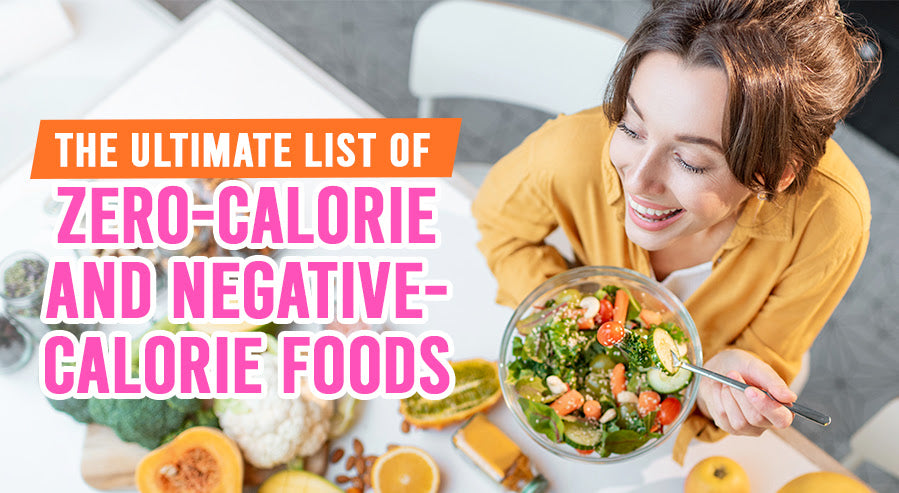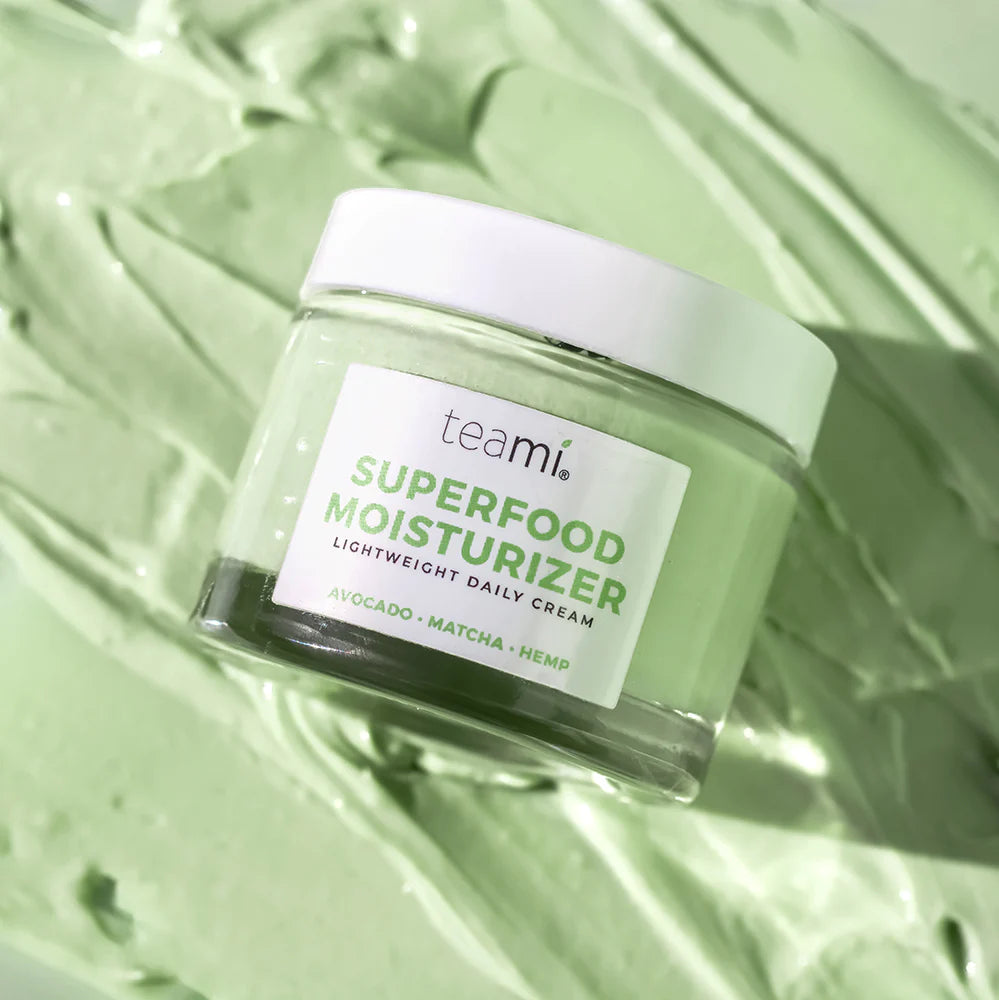The Ultimate List of Zero-Calorie and Negative-Calorie Foods

Have you heard about those amazing snacks that basically burn their own calories? Well, let me talk about what's commonly referred to as zero-calorie and negative-calorie foods. While no food has exactly zero calories, there are some that are so low in calories that your body may actually use more energy to digest them than the food itself contains.
Imagine having a snack that fills you up and also plays a part in handling your weight. Sounds great, doesn't it? That's the beauty of zero-calorie foods - they give you a way to indulge in eating without any guilt. Today, we are going to study why these foods can be an important part of maintaining a healthy diet and why they could help you push closer toward your health goals with every single bite.
Now, let's look a bit deeper into these interesting foods. I'm really excited to share a list with you. It might totally turn your strategy to snacking and meal planning. Make yourself ready to pick up some, make some thoughtful changes, and maybe even challenge a few of the preconceptions you hold about food.
What Are Zero Calorie Foods?
Zero-calorie foods aren't exactly zero calories, as they possess such little caloric content that your body might end up burning more energy digesting them than the energy they give you. These foods are usually water and fiber. It leads to their low-calorie count. To give you an example, celery - I always find it crunchy and refreshing, and it's mostly water as it contains just six calories per large stalk. Cucumbers and iceberg lettuce do this, too, with cucumbers having only around 16 calories per 100 grams and lettuce approximately 10 calories per cup.
When I try to work these foods into my everyday meals, it's usually easier than it seems. They make a great addition to salads or snacks that don't tip the scales on your everyday calorie intake. They also help keep you hydrated, as they contain a high water content. It is always a good thing!

Now, let's move on to some of the benefits I've seen. Fiber-rich foods like broccoli and brussel sprouts support your digestive health, and they also keep you feeling full for longer periods. This definitely helps you to eat less overall and handle your weight. To give you an example, broccoli. It is found to be flexible and tasty, is loaded with fiber, and only packs about 31 calories per 100 grams.
When it comes to citrus fruits, many people often forget them as low-calorie options. Oranges are about 87% water and have only roughly 47 calories each. They are bursting with vitamin C. This nutrient is wonderful for boosting your immune system. It makes oranges very beneficial.
You can really use zero-calorie foods in flexible ways within your diet, like throwing them into a stir-fry with broccoli, Brussels sprouts, and carrots for a meal that's low in calories but rich in nutrients. Or, you could start your meal with a fresh salad to help curb your appetite and to prevent overeating later.
It's important to remember, though, that while zero-calorie foods are pretty beneficial, they can only really be their best when they are part of a well-rounded diet.
Do Negative Calorie Foods Really Exist?
We've all heard the interesting claim that some foods might actually take more energy to digest than they give you. This claim leads to a possible calorie deficit. This idea sounds absolutely perfect for anyone who is trying to shed some extra pounds. But I've really started to ask myself, is there any truth to this idea? Can munching on things like celery or lettuce really be the secret to weight loss?
While jumping into the research, I realized that the concept of negative-calorie foods turns out to be more of a myth than a reality. Although it's true and pretty undeniable that foods like celery and cucumbers are extremely low in calories and are bursting with water, there isn't any solid scientific evidence to support the claim that they help burn more calories than they contain. To give you a clearer picture, let's think of a celery stalk. It holds roughly ten calories. The energy it takes to digest it does not even come close to turning it into a negative-calorie food.
Usually, the energy needed to digest food is about 10% to 20% of the calorie content of the food. Even with high-fiber, water-rich foods, the calories expended during digestion are just not sufficient to categorize any food as having negative calories. It's definitely an interesting concept, and it may not be a useful strategy if you're trying to slash your calorie intake.

But I find it helpful to acknowledge what these foods do have. They are low in calories but are also rich in nutrients. These qualities make them excellent additions to a balanced diet. Foods like these can help in reducing your overall caloric intake when included as part of a nutrient-rich diet plan, but the idea that they alone can lead to weight loss by negative calories is basically not accurate.
Reflecting on the part of negative calorie foods, I think understanding their part in a balanced diet is important. No single food will trigger weight loss solely through its calorie content. When you add a number of nutrient-dense, low-calorie foods, you can definitely support a healthy, sustainable weight management strategy. This strategy is by far more beneficial for getting and maintaining weight-loss goals than relying solely on the concept of negative calories.
List of Low-Calorie Fruits Rich in Water and Fiber
Paying attention to better health usually means looking closely at what we eat. I find that picking foods rich in nutrients but low in calories can really make an important difference. Now, let's talk about some fruits and vegetables that totally fit the bill: they are low in calories, but they contain water and fiber. These are just great for keeping you hydrated and feeling full. It is pretty important in handling weight.
To give you an example, celery has only around 14 calories per cup and is about 95% water. Cucumbers have even fewer calories, just 8 per cup, and are absolutely great for snacking on. Maybe iceberg lettuce doesn't have a whole lot of nutritional value, but it is a star at hydration, with only about five calories per cup and 95% water. If you're hunting for something a bit richer in nutrients, broccoli and tomatoes are definitely top choices. Each has 31 and 32 calories per cup, in that order, and both are loaded with water and a good amount of fiber.

When we turn our attention to fruits, watermelon really stands out with its juicy taste and low calories. It has only 30 calories per 100 grams and is 91% water. Apples and grapefruits are also solid choices, bringing in 52 and 69 calories per 100 grams, in that order. They make for pretty filling snacks or tasty additions to your breakfast, thanks to their high water content. It is 86% for apples and 92% for grapefruits. Berries like strawberries, raspberries, and blueberries. It packs about 32 calories per half cup, is loaded with fiber, and is just perfect for a quick snack or as a delicious topping for oatmeal or yogurt.
Adding these fruits and veggies into your diet is really pretty easy. Keep them helpful for quick snacks, or toss them into your meals. You can chop up some celery, cucumbers, or bell peppers for a crispy salad, or blend berries and bananas for some delightful smoothies. Honestly. Making these nutritious, low-calorie foods a regular part of your day is all about making smarter food choices for a healthier lifestyle.
Other Minimal Calorie Food Options
Expanding your diet to add low-calorie options like black coffee, unsweetened tea, pickles, and mustard isn't just about handling your weight - it also brings a little excitement to your meals without adding extra calories. Besides, regular fruits and vegetables have their own unique health advantages along with these options.
Let's talk black coffee first. You can enjoy it virtually calorie-free if you avoid adding sugars or cream. It is loaded with antioxidants that support heart health and help reduce the risk of diseases. An easy cup of black coffee can really help you manage your caffeine intake. It improves both your physical and mental performance without packing on the calories. Also, unsweetened tea is an excellent drink option. It is loaded with antioxidants like catechins and flavonoids. These compounds are great because they help fight inflammation and prevent chronic diseases like heart disease and diabetes.

Now, let's talk about pickles. They have just 12 calories per 100 grams, can really spice up a meal, and give you beneficial probiotic bacteria. These bacteria are very helpful for digestive health. But, it's a good idea to enjoy them in moderation because of their high sodium content.
And then there's mustard. With less than five calories per teaspoon, mustard adds a wonderful flavor to your dishes. Thanks to parts like curcumin and other antioxidants, it has anti-inflammatory benefits. Mustard works really well in dressings, marinades, or basically as a condiment. It helps with your meal without contributing important calories.
Adding these nearly zero-calorie items into your meals can make your eating plan both more different and fun. Why not try adding these ingredients to all sorts of recipes? You might think about how adding mustard or unsweetened tea could enrich the flavors of your next meal while you keep an eye on calorie intake.
Are There Nutritional Benefits to These?
When we take a look at foods that are low or even negative in calories, it's pretty clear that they play a big part in weight management because they are with nutrients. Let me talk about celery for a second. This veggie is usually called a "negative calorie" food because your body may actually burn more calories digesting it than the celery itself contains. Not only is celery low in calories, but it also gives vitamins A, K, and C, along with potassium and luteolin, an antioxidant that helps reduce inflammation and might even protect against some cancers.
Again, cucumbers are mostly water. It means they're low in calories. But, they bring a nice little punch of vitamin K. It is important for healthy bones. Besides, they contain potassium. It keeps your heart and muscles in top shape. The skin of cucumbers has a lot of fiber. The fiber helps digestion and keeps you feeling full, hopefully helping you manage your calorie intake better.

Berries like strawberries, blueberries, and raspberries are great choices because they are rich in antioxidants. These little guys protect your cells from damage. Blueberries, in particular, are a real treat for your brain and could even lower your risk of heart disease. Berries also give you fiber, vitamin C, and manganese. It supports your immune system and bone health.
Adding these foods to your diet is a great strategy for controlling calories and boosting your nutrient intake. But, it is extremely helpful to add protein and healthy foods to make sure your diet is balanced and provides all the nutrients your body needs.
While these foods are definitely nutritional standouts, relying on them alone is not such a great idea. Eating a number of foods is really important for obtaining all the nutrients your body will need. Have you thought about how you might add these superfoods into your everyday meals to balance your calories and support your vitamin and mineral intake?
How to Work These Foods into a Balanced Diet
Adding zero-calorie and negative-calorie foods to your everyday meals really can help you cut down on calorie excess.
Have you thought about how to keep nutritional balance in your diet? I have found that pairing a bowl of leafy greens with healthy fats, like avocado or nuts, fills you up. This combination also packs in a great amount of vitamins, minerals, and some really important fatty acids.
When it comes to meal planning, the number of ingredients is important. Celery and cucumbers add a nice, crisp crunch to your meals and are definitely low in calories, but they do not cover all your nutritional needs. Why not try throwing some berries into your salad, as it gives a healthy dose of antioxidants? Or think about adding some zucchini slices to your pasta. Does it really help your fiber intake?

Talking about nutrient density is an important concept. It refers to all the vitamins and minerals present in your food. To give you a little perspective, picking kale or spinach instead of iceberg lettuce can really help in improving your meal's nutritional value without increasing your spending.
It is also important to remember not to remove high-calorie, nutrient-rich foods like eggs or salmon from your diet since these foods give you some really important nutrients that aid your body's functioning.
Think of low-calorie foods as the foundation of salads or as healthy extras in sandwiches and wraps. For a healthy swap, think about munching on crunchy carrots or bell peppers instead of reaching for a bag of chips for a satisfying, low-calorie snack.
If balancing your diet sounds a little overwhelming, think about speaking with a registered dietitian. They can give you personalized advice to make sure your diet supports your health and keeps you feeling satisfied and well-nourished. Remember, the goal here is to create a sustainable eating pattern that keeps you healthy and also makes you happy.
Finding The Perfect Blend
Zero-calorie and negative-calorie foods like celery, cucumbers, and water-rich fruits are really helpful for handling health and weight issues. I find that they keep your calorie count low, and they can help keep you hydrated and full. But I also know that they're not a magical answer. It is important to have a number of nutrients in your diet, and sometimes, it's a pretty good idea to look for advice from nutrition experts who can customize your eating plan to your needs.
Are you thinking about integrating these foods into your diet without feeling like you're missing out? Just imagine eating meals that are both satisfying and weight-friendly. That's what these nutrient-rich foods can really do for you when added to a balanced diet.

Now, let's switch gears to Teami. Here at Teami, we're all about supporting your healthy living with our wide set of teas and wellness products. If you're looking to manage your weight, help with your sleep, help with your immunity, or help with your skin's glow, we definitely have something that can fit your health goals. Why not drop by our store and pick out the natural blend that perfectly fits what you're looking for?
Subscribe to our Newsletter
Subscribe to our newsletter and get 10% off your first purchase
 Instagram
Instagram



